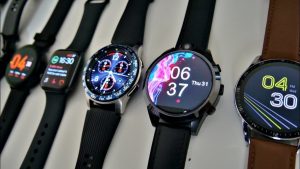Gartner predicts the sports watch market will be worth close to $8 billion by 2021, and consumer tech companies are working overtime to develop an innovative edge over their competition. The sports watch and wearable industry, and the success of products like the Apple Watch, inspire firms to push the boundaries of what these devices can do.
However, companies should proceed with caution as some of the more advanced health features may require FDA approval before hitting the market. For instance, Samsung's Galaxy Watch Active 2 is equipped with an ECG feature that may require a jump through additional hurdles from federal regulators.
Government agencies control technologies like ECGs, blood oxygen monitoring, and glucose meters. Companies looking to wade into the world of health wearables will need to consider how FDA rules will impact their products. Despite it being a somewhat involved procedure, firms can streamline the process if they understand some of the primary considerations.
The FDA oversees medical device regulations within the United States – the specific branch empowered to do so is called the Center for Devices & Radiological Health. Rules vary based on device categorization, which is defined by the device's risks. Class I devices are deemed as "low to moderate risk," and account for approximately half of the market. Examples include bandages, dental floss, and enemas.
Class II devices are still considered simple tools but are more complicated than their Class I counterparts. They are "moderate to high risk," and require more strict controls to ensure effectiveness and safety. This category includes condoms, pregnancy test kits, and the Apple Watch.
Class III is comprised of devices that are believed to be the highest risk. They are sophisticated and represent about 10% of all technology on the market. Most of these devices sustain or support life, are implanted, or pose a severe risk of illness or injury if they fail. Device classification will impact what kind of application will be made to the FDA. Regulator response can range from 90 days for straightforward submissions, up to 240+ days for Class III premarket approval applications.
The FDA also looks for companies with a well-developed quality management system (QMS) for medical devices. More specifically, a QMS is a "formalized system that documents the policies, procedures, documentation requirements, and processes" that are used by medical device makers. Many firms now offer cloud-based quality management that can help consumer tech companies create these systems and ensure documents remain ready for an audit.
Those interested in making fitness wearables should also be mindful of design controls. The FDA has a designated design control process in place to ensure the safety and effectiveness of all devices on the US market. The procedure consists of eight sections of guidelines that outline tests, approvals, transfers to manufacturing, specifications, and change management.
Design controls work hand-in-glove with risk management, but it's the latter that safeguards customers through proper evaluation of a device's potential hazards. A sound system will highlight any dangers, assess the level of risk, and provide a reasonable level of control to counter potential concerns. Companies mustn't put off the development of a risk management process, as it can become more challenging as time goes by.























